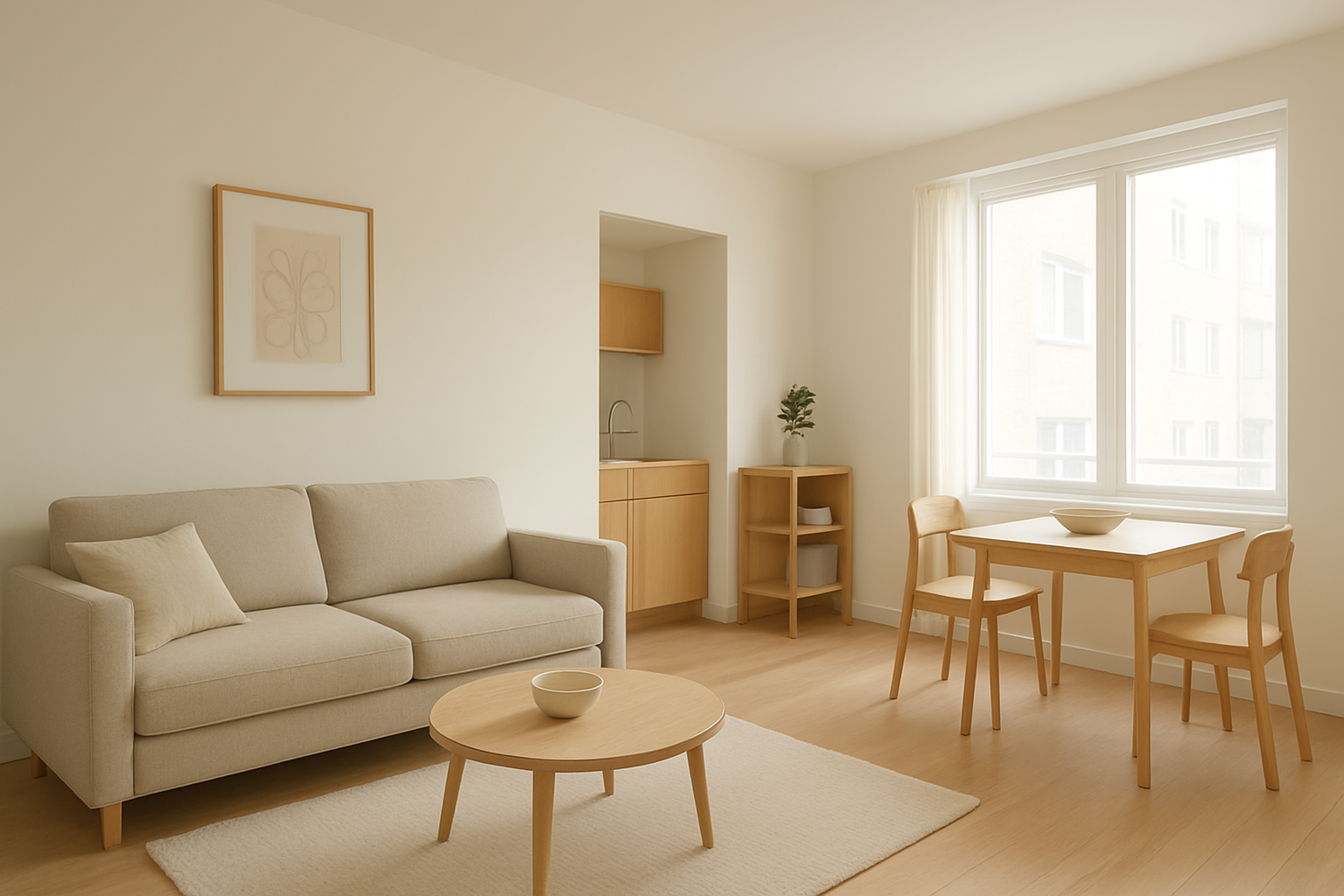Living in small homes doesn’t mean compromising on comfort. That’s where space-saving design for small homes becomes a game-changer — blending functionality with style to make every inch count. With cities expanding at an avian flight pace and real estate prices on the rise, more people are choosing small homes and compact apartments. Small-space living brings a range of challenges — from limited storage and reduced privacy to the headache of arranging furniture — but clever interior design solves many of these problems.
Why Space-Saving Design Matters
Moreover, space-saving design is not just about fitting furniture into a tiny room; it’s a practical response to modern living. By rethinking layouts, prioritizing multifunctional pieces, and using vertical storage, you can make a small home feel larger, calmer, and more useful. For example, a sofa that converts into a bed or an ottoman with hidden storage immediately multiplies the usefulness of a single item. Therefore, investing in smart design improves daily comfort and offers long-term value.
1. Utilizing Every Square Inch with Space-Saving Design for Small Homes
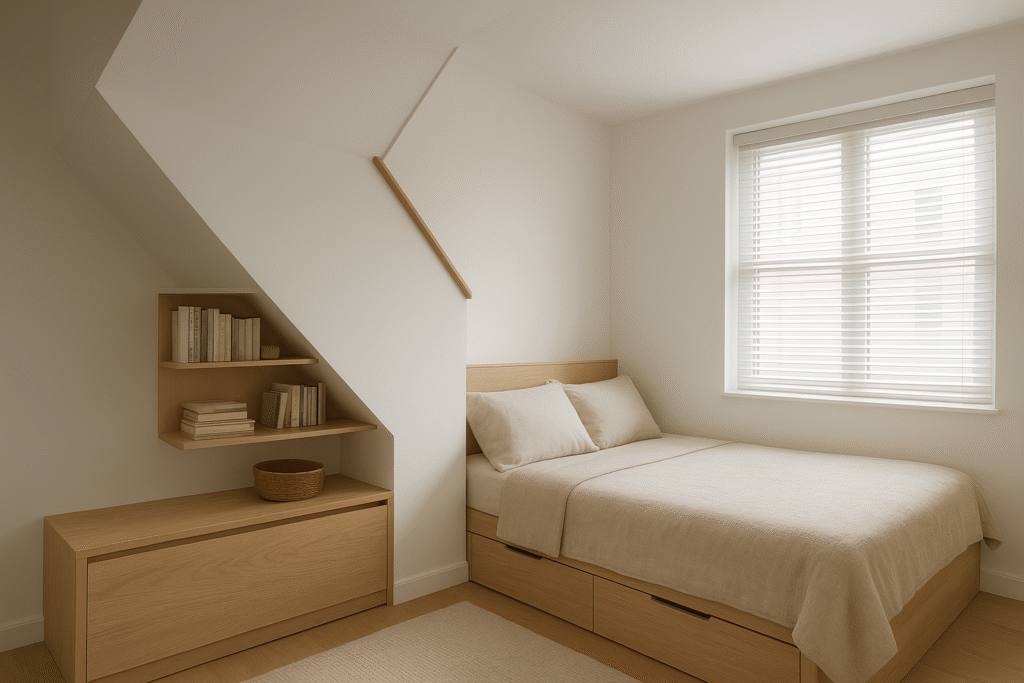
Dead Space is Transformed Into Something Useful by Space-Efficient Design A major advantage of space-efficient living is to take what are essentially dead spaces and turn them around so that they perform some function. Many times, you can utilize corners, space under the stairs or even under your bed to create storage or extra seating. There are custom Internum closets,’’ wall-mounted shelves, and even some vertical storage options so every square foot can sing. This controlled utilization of space is what makes small dwellings feel big and well-designed.
2. Establishing Flexible Spaces Through Space-Saving Design for Small Homes
In compact homes, a single room often has to fulfill several roles. For instance, a living area may need to act as a guest room or even a workspace. Space-saving design incorporates multifunctional furniture such as sofa beds, foldable desks, expandable dining tables, or ottomans with concealed storage.

These innovative solutions simplify the adjustment of a space to meet various needs, enhancing daily convenience.
3. Boosting Visual Appeal
Many individuals worry that smaller homes will always feel cramped; however, smart design strategies can radically alter that viewpoint. Light, neutral color schemes create an airy and open atmosphere.
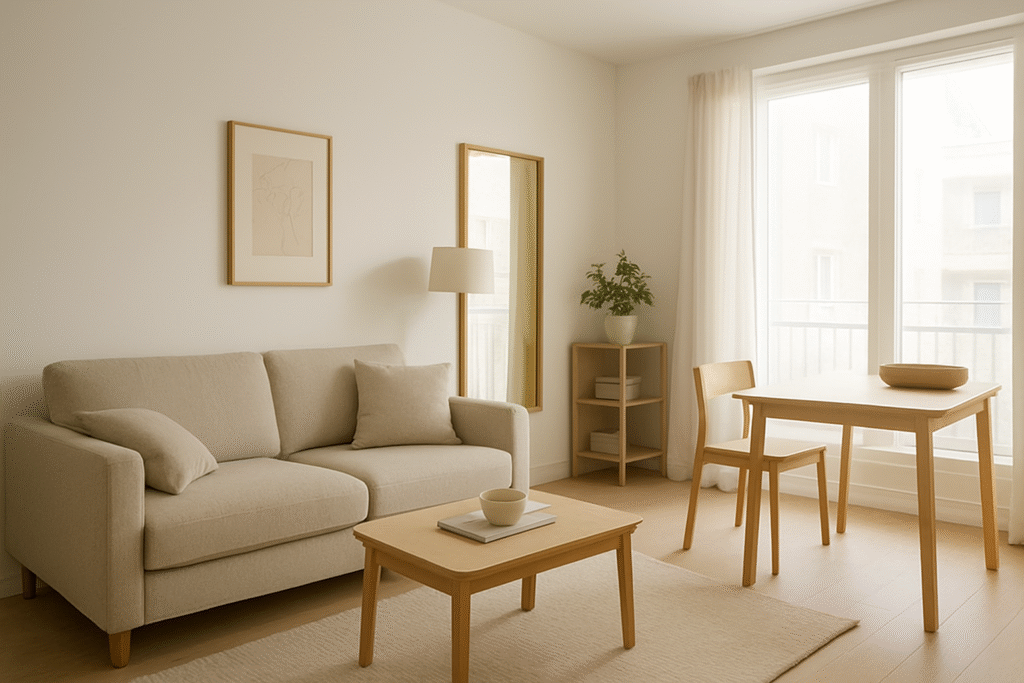
Large mirrors add a sense of depth, while streamlined, minimalist furniture prevents overcrowding. With a thoughtful mix of functionality and aesthetic, even the tiniest apartment can appear contemporary, welcoming, and spacious.
4. Facilitating Daily Functionality and Flow

At the core of space-saving design is practicality. A home designed with clear walking paths, intelligent storage, and strategically arranged furniture supports natural movement and streamlines everyday tasks. For example, positioning the dining area close to the kitchen or incorporating pull-out drawers in cabinets ensures that routine activities are smooth and efficient. The design complements your lifestyle rather than hinders it.
5. Minimizing Clutter and Anxiety
Clutter poses a significant challenge in small living spaces. It not only contributes to a disorganized appearance but also fosters a stressful atmosphere. Solutions that save space help reduce clutter by ensuring that every item has its own spot. Storage that mounts on walls, concealed compartments, and innovative organizers create a neat, serene environment where you can unwind without feeling burdened by excess belongings.
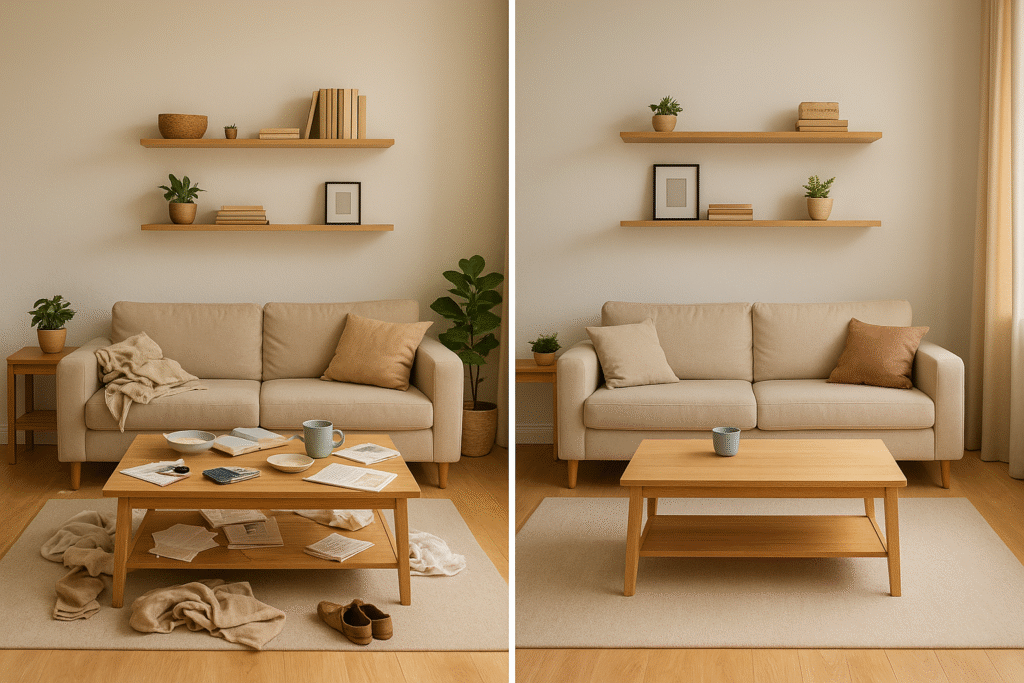
6. Adjusting to Contemporary Lifestyles
The modern generation appreciates adaptability and convenience. Whether you’re entertaining visitors, telecommuting, or accommodating a growing family, space-saving design adjusts to your evolving lifestyle. For instance, a dining table that extends for festive occasions or a wall bed that clears up floor space in a studio during daylight hours exemplify how these designs can adapt to your requirements.
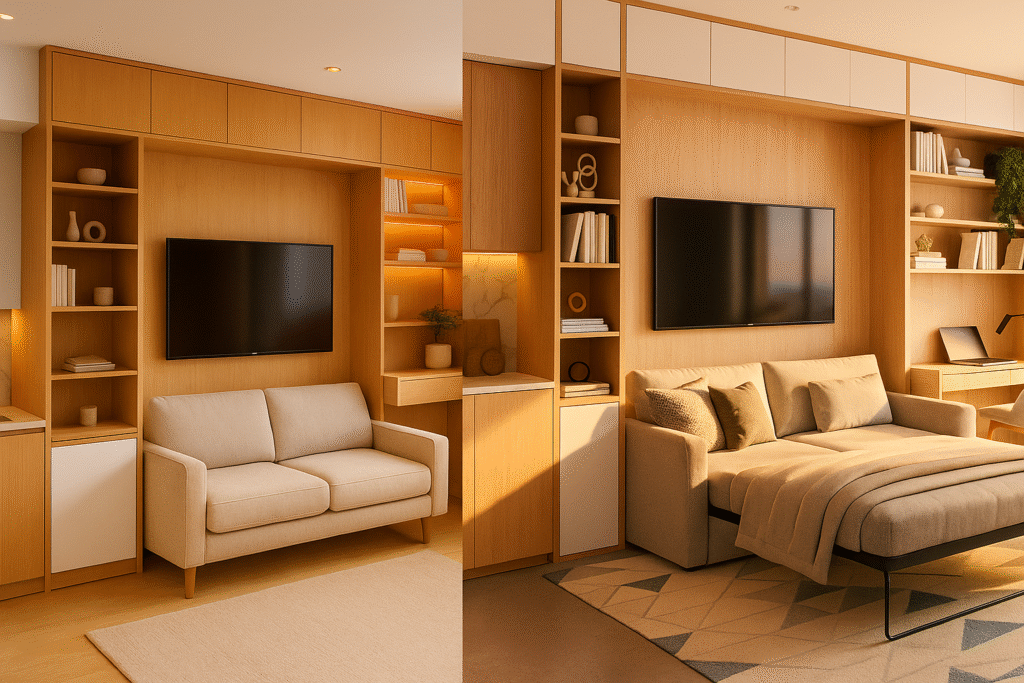
7. Lasting Value and Wise Investment

Although some space-saving furniture and solutions may require a higher initial investment, they often turn out to be a prudent choice in the long term. By enhancing the functionality and livability of small homes, they boost comfort, lessen the need for constant renovations, and might even increase the property’s resale value. For tenants, portable options like nesting tables or modular shelving serve as budget-friendly yet effective solutions.
8. Merging Smart Technology with Space-Saving Design
Contemporary homes rely heavily not only on furniture and layout but also on technology. Combining smart devices with space-saving design elevates efficiency. For example, wall-mounted smart TVs remove the need for bulky stands, while voice-activated lighting systems minimize clutter from switches and cables. Compact appliances like combination washer-dryers or collapsible kitchen tools maximize functionality without compromising space. This fusion of technology and design makes small homes prepared for the future.
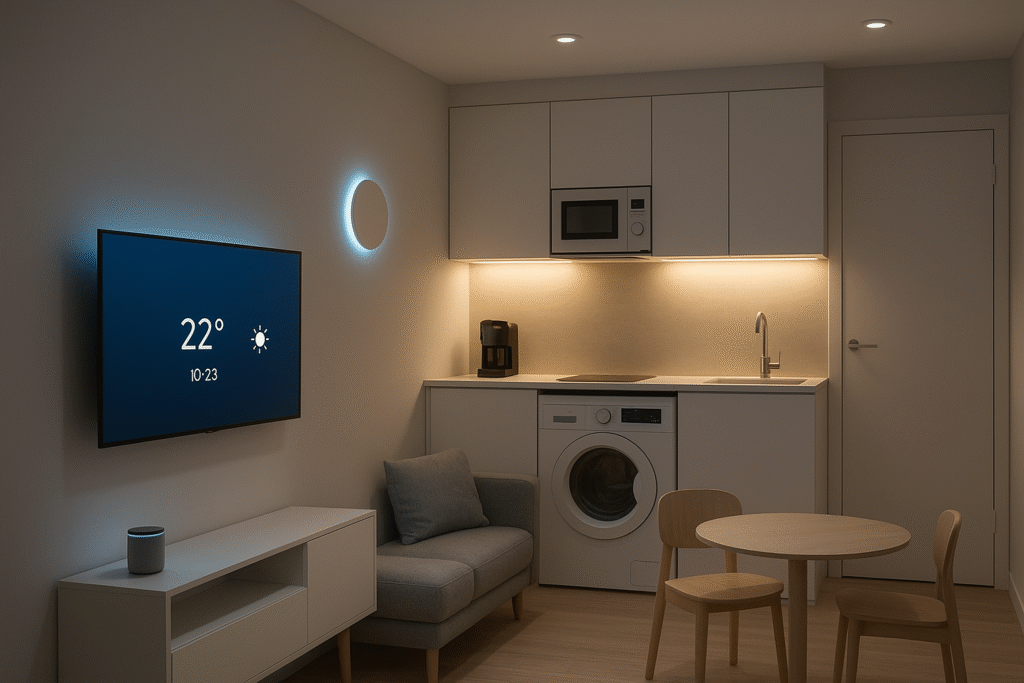
9. Emotional Advantages of Space-Saving Interiors
A thoughtfully designed space does much more than enhance function—it also affects mental health. Chaotic and cramped settings often lead to stress, anxiety, and lower productivity. Conversely, open, organized, and carefully planned interiors encourage relaxation and a feeling of control. Research indicates that minimalist and space-efficient designs can improve concentration and boost overall well-being. In compact homes, this advantage is particularly significant, transforming limited space into a sanctuary.
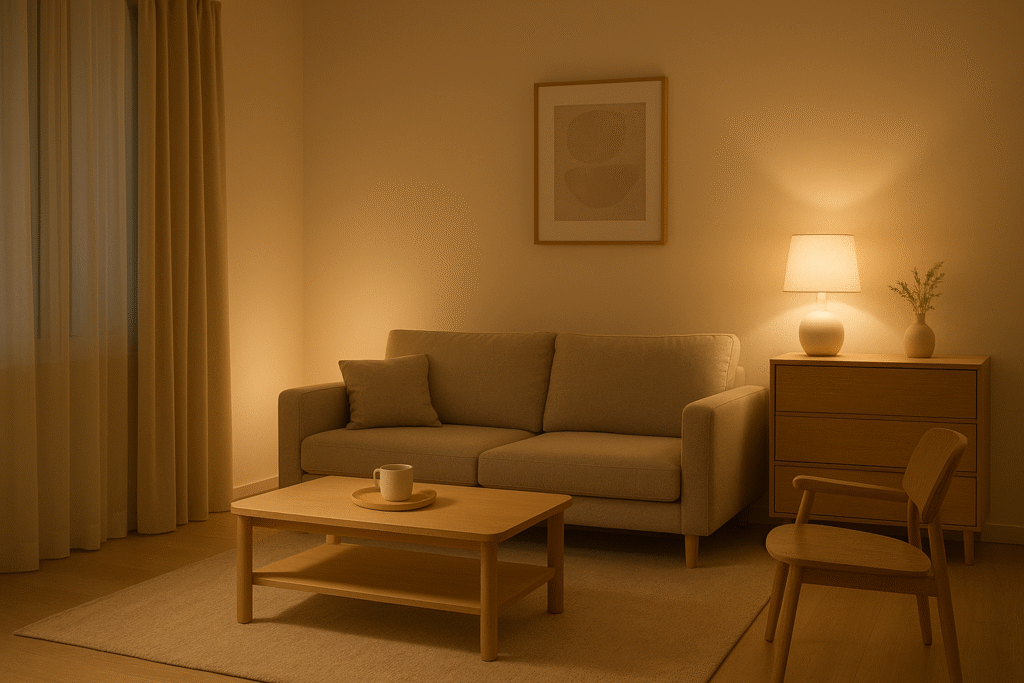
Conclusion
Small spaces no longer equate to restricted potential. With space-saving design, you can experience the comfort, aesthetic appeal, and effectiveness of a well-ordered living area. It optimizes every nook, diminishes clutter, and fosters a versatile space that adjusts to your lifestyle. For both homeowners and renters, embracing this mindset is not merely a design trend—it represents a smarter, more sustainable lifestyle.
In summary, space-saving design is a revolutionary approach, demonstrating that the importance lies not in the size of the home, but in how you plan and inhabit it.
Explore more at our Interior Design Services page.
Check our Portfolio for small-space projects.
For more ideas, see Better Homes & Gardens: Small Space Ideas HGTV+1
Also check out Architectural Digest: 16 Small Space Design Hacks architecturaldigest.com
FAQs
1. What is space-saving design?
Space-saving design focuses on maximizing functionality in limited spaces through smart layouts and multifunctional furniture.
2. What are some examples of space-saving furniture?
Examples include sofa beds, foldable desks, expandable dining tables, and wall beds that can be tucked away when not in use.
3. How does space-saving design improve daily life?
It allows one room to serve multiple purposes—like turning a living area into a workspace or guest room—making life more convenient and clutter-free.
4. Can space-saving design still look stylish?
Absolutely. Modern designs combine aesthetics with practicality, offering sleek, elegant furniture that enhances your interior while saving space.
5. Is space-saving furniture durable?
Yes, most space-saving furniture is built with strong materials and modern mechanisms to ensure durability and long-term use.

